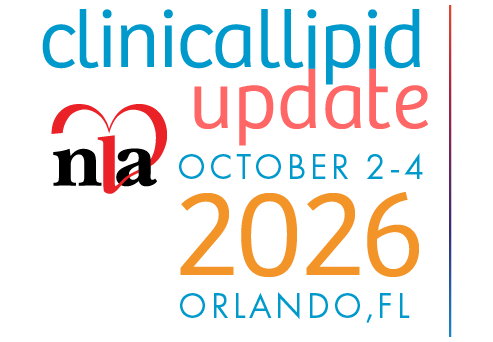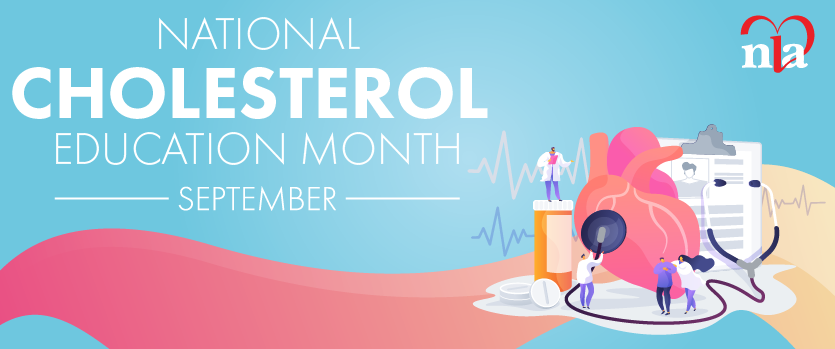Introduction
‘Adulting’ refers to the practice of behaving in a manner or characteristic of a responsible adult in order to successfully complete necessary, although at times mundane tasks.1 Mastering seven basic skill sets are considered necessary to successfully become an adult, referred to as the pillars of adulting.2 These include financial basics, basic cooking skills, health and wellness, household handiness, basic organizational skills, career development, and communication. Four of these can be directly applied to individuals with lipid disorders: basic cooking skills, health and wellness, organizational skills, and communication. The assumption is that patients can engage in self-care and can navigate the healthcare system, thus ensuring a smooth transition. This is an extended process toward independence beginning during early adolescence and is distinct from the transfer of care from the pediatric to the adult lipid specialist. It is focused on self-management, with the transfer generally occurring between 18-21 years of age.3 Adulting is not automatically achieved when an individual reaches a certain age, but is gradually achieved through personal determination and resolve, along with the support of parents or guardian, and pediatric and adult lipid specialists.
Individuals with lipid disorders, specifically familial hyperlipidemia and other complex dyslipidemias, are in need of specialized care throughout the lifespan. This requires coordination between the pediatric and adult provider, in which a plan is enacted to ready the patient for adult care. A formal plan should be established, maintained, and updated throughout early adolescence and forwarded to the adult provider at the time of transfer of care. Unfortunately, it has been shown that approximately 50% of young adults become lost to follow-up within the first year of transfer.4 It is highly likely that both pediatric and adult specialists are unfamiliar with the other’s practices, thus preventing the adequate preparation of the patient for what to expect following the transfer of care. This places the adult provider in the difficult position of having to allay the concerns of the patient who is confronting a sudden and unexpected change from a pediatric to adult lipid practice. Should the transfer of care include the move from an academic medical center to private practice, or vice versa, then an even greater culture shock is experienced by patients. By familiarizing the pediatric provider’s role in transition, and clarifying the role of the adult provider, it is expected that a bridge will be created between these two models of care and decrease the number of patients lost to follow-up during this vulnerable period.
Pediatric Lipid Clinic
Prioritizing the transition process for pediatric and young adults with chronic medical conditions to adult subspecialty care has gained momentum.3 The concept of transition medicine was introduced as early as 1984 at a conference titled “Youth with Disability: The Transition Years” and subsequently defined in A Position Paper of the American Society of Adolescent Medicine.5 Key components in the original objectives (uninterrupted, coordinated, developmentally appropriate, psychologically sound, comprehensive) remain the cornerstone of adolescent transition policies.
The process of transitioning adolescents with chronic illnesses diagnosed and managed during childhood such as diabetes mellitus, inflammatory bowel disease, cystic fibrosis, sickle cell disease and congenital heart disease, requires seamless clinical transition to adult specialty care, and has been studied.6 Pediatric dyslipidemia exists in almost 25% of children aged 6 to 19 years.7 Despite its prevalence, the magnitude of atherosclerotic cardiovascular disease (ASCVD) as the leading cause of mortality in the US, the evidence of progressive atherosclerosis from untreated dyslipidemia beginning in youth,8 and efforts to screen, identify and treat in childhood,9 pediatric and adolescent dyslipidemia has not been the subject of a carefully planned and executed transition until recently.10,11 Universal and targeted lipid screening in childhood have identified a new generation of patients with chronic illness requiring a continuum into adult specialty care.
Almost 40 years later, the goals in adolescent transition have not changed. The original tasks have only matured to include more ambitious coupling of patients perceived and preferred needs with the health care provider in regards to management, while navigating inevitable challenges. With the specific aim of preventing development of atherosclerosis, providers should seek to successfully deliver adolescents to the adult specialist in a manner that is appropriate for the developmental, social, cognitive, and medical needs of the patient.
A formal transition program for adolescent dyslipidemia should be timely, considering the complexity of medical conditions, social and family constructs. Available pediatric and adult lipid experts within defined lipid management clinics to prevent ASCVD is not guaranteed outside large academic and medical centers. There should be an urgency to provide a specialized intra-professional care approach involving advanced practitioners, nurse navigators, pharmacists, genetic counselors, inpatient and outpatient treatment facilities.
Recommendations for lipid management strategies have been provided since 1992 for pediatric patients.12 Scientific statements and guidelines for screening and treatment have been modified as larger bodies of evidence emerge, while results from longitudinal studies attempt to link primordial care, preventive care, and early treatment in childhood with adult outcomes.9,13-16 Diet, and lifestyle modification are the enduring first line non-pharmacologic management. Bile acid sequestrants, once the only pharmacologic choice, has been replaced by statins as the primary treatment of hypercholesterolemia in pediatric patients with lipid levels refractory to low fat diet and lifestyle interventions.1,6 The pharmacologic armamentarium for pediatric dyslipidemia has since grown to several drugs now approved by the U.S. Food and Drug Administration (FDA).9,13,17
Despite these positive strides in managing pediatric dyslipidemia, hesitancies regarding screening and treatment prevail with perceived discrepancies between pediatric and adult algorithms.10 These incongruencies may exist due to comparing guidelines from different eras, omitting relevant history, assumptions, and extrapolating data from the two groups.10 Overcoming the transition hurdle, therefore, requires an understanding that a re-evaluation of the individual patient’s risk factors for ASCVD, lipid status, and therapeutic goals upon becoming an adult patient, is at a crucial pivot, and must be viewed as a natural step in the transition. The treatment plan may require change to follow the adult algorithm with a much broader and more appropriate selection of therapeutics than is currently available in pediatrics (table 1).

Sunil B, Foster C, Wilson DP, Ashraf AP. Novel therapeutic targets and agents for pediatric dyslipidemia. Ther Adv Endocrinol Metab. 2021;12:20420188211058323. Published 2021 Nov 24. doi:10.1177/20420188211058323
Ashraf AP, Sunil B, Bamba V, et al. Case Studies in Pediatric Lipid Disorders and Their Management. J Clin Endocrinol Metab. 2021;106(12):3605-3620. doi:10.1210/clinem/dgab568
Adult Lipid Clinic
A more youthful population with dyslipidemia has made their debut into the adult lipid clinic and are often accompanied at the initial visit by a parent, grandparent, guardian, or friend. Regardless of whom, the provider has the opportunity to assess the need for supportive involvement. It is important for the provider to have alone time with the patient, engaging the young adult in shared decision making. The expectations include lifelong lipid clinic follow-up, adherence to a healthy lifestyle, knowledge of the lipid panel and goals, and medication compliance. This initial adult provider encounter is crucial to the future of their cardiovascular health.
Many patients have some understanding of their disease process from their pediatric experience. It is important to:
- Review the disease process and provide an opportunity to ask questions.
- Provide resources for guidance
- Family Heart Foundation
- American Heart Association
- American Diabetes Association
- Provide contact information for the Lipid Team and patient portal
- Set up telephone follow up with provider or pharmacist if available
- Assist with compliance
- Address issues with the new mediations
- Avoid lapse of therapy due to change in medical insurance.
The cornerstone of all lipid therapy begins with lifestyle10 and must be emphasized during the transition visit. Whether entering the workforce, attending college or trade school, a need to establish and maintain diet and exercise routines is paramount. An assessment of metabolic demand and caloric needs is necessary as there may have been a change of activity level since the completion of high school. A high school weight and knowledge of high school sports participation can assist the provider in determining current needs. Regardless of the environment, the patient should be provided with heart healthy dietary information and other resources for a heart healthy lifestyle as many patients will be living independently for the first time.
All young adults will make decisions regarding the management and social implications of sex, drugs, and alcohol. Collaboration between the lipid specialist and Obstetrics and Gynecology is encouraged to discuss both birth control and pregnancies, planned or unplanned. Genetic counseling is recommended for patients with complex inherited lipid disorders in family planning. The impact of alcohol and drug abuse on lipids should be reviewed. The patient should be counseled on avoidance of excessive drinking including binge drinking, heavy drinking, and any drinking by pregnant women.
The initial Adult Lipid Clinic appointment may have been scheduled by the Pediatric Lipid Specialist. However, it is important the patient has information on how to make an appointment or change, through phone or by the patient portal. One key to successful transition is the return of the patient in follow-up.
Eventually, patients with inherited lipid disorders may start their own family. Patients should be encouraged to include their partner in lipid education and management which can be accomplished during a clinic visit. Patients and partners should understand implications of the lipid disorder, and the potential for their future children to inherit the disorder. Genetic counseling and cascade screening can be discussed as well. The future is bright for the young adult who may not face the same cardiovascular sequelae of the previous generations, as there will be new and improved therapies for the future generations.

Summary
It is a challenging time for patients as they exit the familiar environment of the pediatric lipid clinic and enter the adult setting. A successful transition begins in early adolescence and culminates in the transfer to the adult lipid clinic when developmentally and age appropriate, where the adult provider is a coach and partner in shared decision making. Although anxiety producing, this process is made less stressful when there is coordination between the pediatric and adult lipid providers. This formal bridge between pediatric and adult care can prevent lapses in care that may be associated with a decrease in the quality of medical outcomes.
References
- Merriam-Webster, Inc, 11th edition (August 1, 2019).
- Biggs, Caroline.The 7 Pillars of Adulting: Have You Mastered Them? apartmenttherapy.com.April 27, 2017.
- Jensen PT, Paul GV, LaCount S, et al. Assessment of transition readiness in adolescents and young adults with chronic health conditions. Pediatr Rheumatol Online J. 2017 Sep 9;15(1):70.
- Hart LC, Pollock M, Brown A, et al. Where did they go? Tracking young adult follow-up during the transition from pediatric to adult-oriented care. Clinical Pediatrics (Philadelphia). 2019 October; 58 (11-12): 1277-1283. Epub 2019 Jun 10.
- Blum RW, Garell D, Hodgman CH, Jorissen TW, Okinow NA, Orr DP, Slap GB. Transition from child-centered to adult health-care systems for adolescents with chronic conditions. A position paper of the Society for Adolescent Medicine. J Adolesc Health. 1993 Nov;14(7):570-6. doi: 10.1016/1054-139x(93)90143-d. PMID: 8312295.
- Wakimizu R, Sasaki K, Yoshimoto M, Miyazaki A, Saito Y. Multidisciplinary Approach for Adult Patients With Childhood-Onset Chronic Disease Focusing on Promoting Pediatric to Adult Healthcare Transition Interventions: An Updated Systematic Review. Front Pediatr. 2022 Jun 14;10:919865. doi: 10.3389/fped.2022.919865. PMID: 35774103; PMCID: PMC9237398.
- Perak AM, Ning H, Kit BK, et al. Trends in Levels of Lipids and Apolipoprotein B in US Youths Aged 6 to 19 Years, 1999-2016. JAMA. 2019;321(19):1895–1905. doi:10.1001/jama.2019.49847.
- Daniels SR, Greer FR. Lipid Screening and cardiovascular health in childhood. Pediatrics. 2008;122:198–208. [PubMed)
- National Heart Lung and Blood Institute (NHLBI). Expert Panel on Integrated Guidelines for Cardiovascular Health and Risk Reduction in Children and Adolescents: Summary Report. Pediatrics. 2011;128(S5):S213–S256. [PMC free article] [PubMed]
- Gooding, HC, Rodday, AM, Wong, JB, Gillman, MW, Donald M Lloyd-Jones, Leslie, LK and de Ferranti, SD. 2015. “Application of Pediatric and Adult Guidelines for Treatment of Lipid Levels Among US Adolescents Transitioning to Young Adulthood.” JAMA Pediatr, 169, 6, Pp. 569-74. https://scholar.harvard.edu/hollygooding/publications/application-pediatric-and-adult-guidelines-treatment-lipid-levels-among-us.
- Sliwinski SK, Gooding H, de Ferranti S, Mackie TI, Shah S, Saunders T, Leslie LK. Transitioning from pediatric to adult health care with familial hypercholesterolemia: Listening to young adult and parent voices. J Clin Lipidol. 2017 Jan-Feb;11(1):147-159. doi: 10.1016/j.jacl.2016.11.001. Epub 2016 Nov 9. PMID: 28391881; PMCID: PMC6547361.
- National Cholesterol Education Program (NCEP). highlights of the report of the Expert Panel on Blood Cholesterol Levels in Children and Adolescents. Pediatrics. 1992;89:495–501. [PubMed]
- Ashraf,A, Bhuvana Sunil, Vaneeta Bamba, Emily Breidbart, Preneet Cheema Brar, Stephanie Chung, Anshu Gupta, Aditi Khokhar, Seema Kumar, Marissa Lightbourne, Manmohan K. Kamboj, Ryan S. Miller, Nivedita Patni, Vandana Raman, Amy S. Shah,Don P. Wilson, and Brenda Kohn; On behalf of the PES Drugs and Therapeutics Committee and Lipid Special Interest Group. Case Studies in Pediatric Lipid Disorders and Their Management. The Journal of Clinical Endocrinology & Metabolism, 2021, Vol. 106, No. 12, 3605–3620 https://doi.org/10.1210/clinem/dgab568
- Daniels SR. Guidelines for Screening, Prevention, Diagnosis and Treatment of Dyslipidemia in Children and Adolescents. [Updated 2020 Jan 18]. In: Feingold KR, Anawalt B, Boyce A, et al., editors. Endotext [Internet]. South Dartmouth (MA): MDText.com, Inc.; 2000-. Available from: https://www.ncbi.nlm.nih.gov/books/NBK395579/
- de Ferranti SD, Steinberger J, Ameduri R, Baker A, Gooding H, Kelly AS, Mietus-Snyder M, Mitsnefes MM, Peterson AL, St-Pierre J, Urbina EM, Zachariah JP, Zaidi AN. Cardiovascular Risk Reduction in High-Risk Pediatric Patients: A Scientific Statement From the American Heart Association. Circulation. 2019 Mar 26;139(13):e603-e634. doi: 10.1161/CIR.0000000000000618. PMID: 30798614.
- Grundy, S, Stone, NJ, Bailey, AL, Beam, C, Birtcher, KK, Blumenthal, RS, Braun, LT, de Ferranti, S, Faiella-Tommasino, J, Forman, DE, Goldberg, R, Heidenreich, PA, Hlatky, MA, Jones, DW, Lloyd-Jones, D, Nuria Lopez-Pajares, N, Ndumele, CE, Orringer, CE, Peralta, CA, Saseen, JJ, Smith Jr, SC, Sperling, L, Virani, SS, and Yeboah, J. 2018 AHA/ACC/AACVPR/AAPA/ABC/ACPM/ADA/AGS/APhA/ASPC/NLA/PCNA Guideline on the Management of Blood Cholesterol: Executive summary. A Report of the American College of Cardiology/American Heart Association Task Force on Clinical Practice Guidelines. Circulation. 2019;139:e1046–e1081.
- Sunil B, Foster C, Wilson DP, Ashraf AP. Novel therapeutic targets and agents for pediatric dyslipidemia. Ther Adv Endocrinol Metab. 2021 Nov 24;12:20420188211058323. doi: 10.1177/20420188211058323. PMID: 34868544; PMCID: PMC8637781.
Disclosures:
Ms. Kathleen Byrne has no financial relationships to disclose.
Ms. Caroline deRichemond has no financial relationships to disclose.
Dr. Karen Lurito has no financial relationships to disclose.
Article By:
Pediatric and Adult Cardiology
John’s Hopkins University Medical Center
Baltimore, Maryland
Adult Cardiology Advanced Practice Provider
Geisinger Heart and Vascular Institute
Geisinger Community Medical Center
Scranton, Pennsylvania
Pediatric Cardiologist
Geisinger Heart and Vascular Institute
Geisinger Wyoming Valley Hospital
Wilkes Barre, Pennsylvania






.jpg)
.png)










